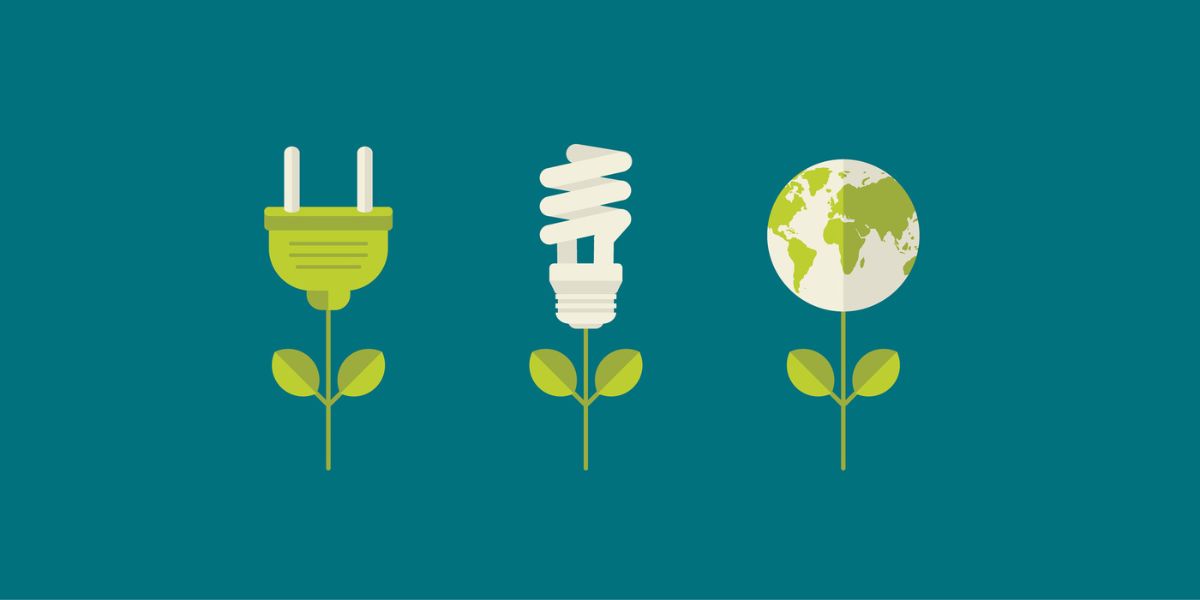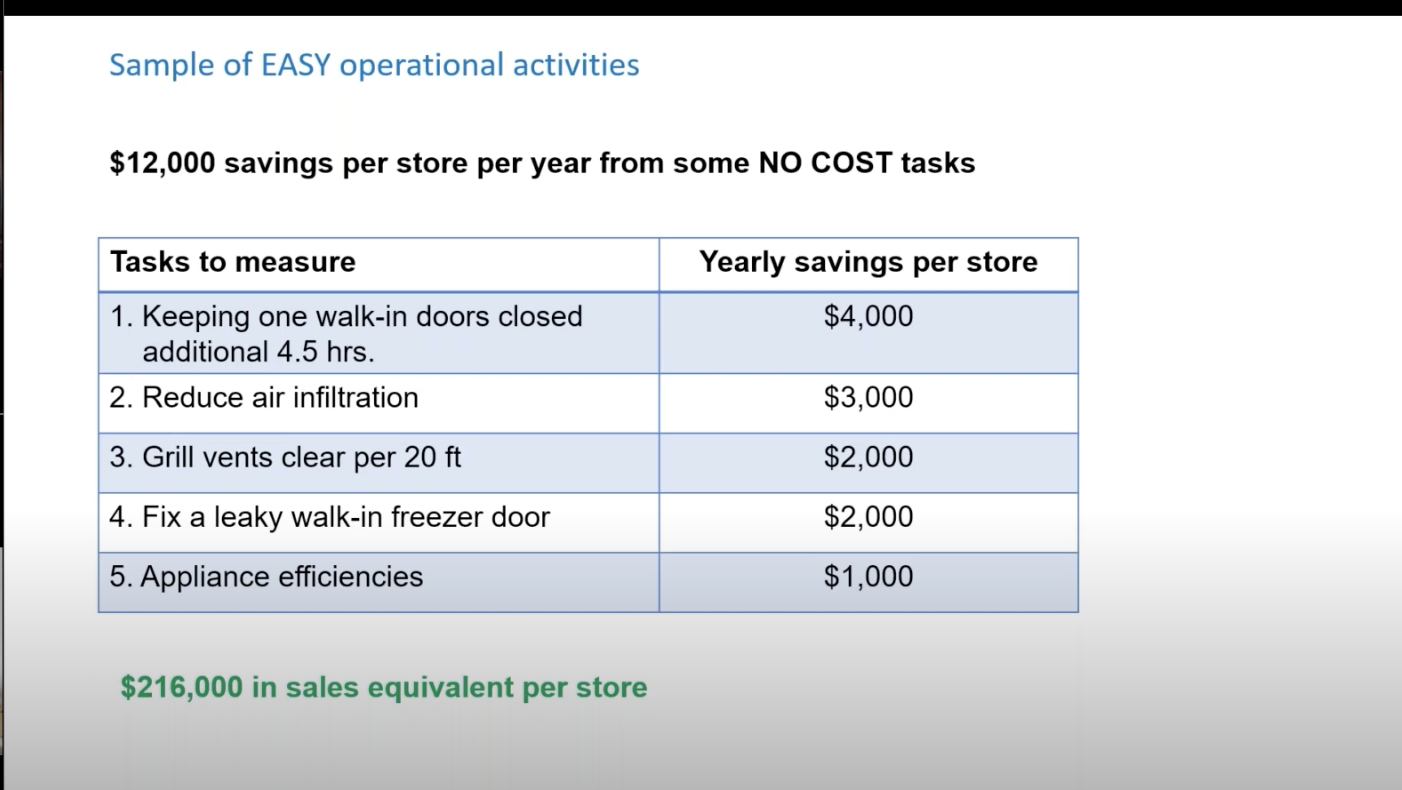Help Isom IGA recover from devasting floods

Of all industries, grocery has the greatest opportunity to employ sustainable operating tactics and profit from them in the form of lower operating costs and increased customer loyalty, according to Peter Cooke, co-founder of Ratio Institute, a non-profit organization that works with food retailers to accelerate measurable sustainability and viability.
But why would a grocer engage in a sustainability program? Well, for starters:
- Energy savings will increase your revenue
- Sustainability-engaged employees are 2x more satisfied at work
- You will appeal to the ever-growing eco-minded shoppers
Cooke and IGA CEO John Ross recently hosted a webinar to share low- or no-cost solutions that independent grocers can quickly and easily implement to save money while improving their store's sustainability efforts. Watch the webinar below and keep reading for highlights.
Just how much can sustainable practices save you? A study by the EPA in partnership with Food Lion determined that a $1 decrease in electrical costs in the retail context has the same bottom-line impact as $18 in sales revenue—a major ratchet effect.
Where Stores Can Cut Costs
So, where and how can you improve your store's sustainable efficiencies?
Ratio Institute can go into any grocery store in America and find between $12,000 - $15,000 of operational savings within 15 minutes that are easy and no cost sort of solutions.
If I was to go into a grocery store for an hour, I'm going to come out with at least $60,000 to $70,000 worth of opportunity not just in energy efficiency but also in waste reduction and water conservation," Cooke says.
Start with these machines and departments to increase energy efficiency, which ultimately saves you money.
Vending Machines
Keeping a vending machine outside your store can be one of your biggest drainers of revenue. Furthermore, if you live somewhere with extremely cold weather, energy is being used to heat the soda to an acceptable temperature.
It costs between $500 and $1,000 a year in energy to run 1-2 vending machines. You have to sell 50 sodas a day to pay for the energy, which is $1,000 a year in energy costs. If you aren’t meeting these sales goals, Cooke says it’s time to reconsider because they use 2,000 kilowatt hours a year in electricity.
"You can make much better investments in the carbonated beverage category than a vending machine," Ross says. "From better marketing and merchandising to increased selections, there are better revenue opportunities."
Refrigeration Cases
If a store has an open refrigeration case, trying to keep grill vents at the bottom clear is priority number one, Cooke says. This takes a little bit of engagement with the employees.
"The most efficient way to do that is to ensure that those grill vents that are trying to recirculate that cold air are not covered up," Cooke says.
So, if you have heads of lettuce blocking that grill vent, every foot of blocked air vents costs about a $100 dollars a year in energy, which can equal up to $1,800 in sales.
In regard to departments with refrigerated cases, Geissler's Supermarkets CEO Bob Rybick, who recently completed the IGA Coca-Cola Institute's Sustainability Certification Program, found that retrofitting the doors is one of the cheapest remodels you can do. Customers will notice the new cases and the aisles will no longer be cold for them.
Iced seafood displays are another to consider. A refrigerated seafood display will use $5,000 less than an iced display. This equals about $90,000 in revenue. A refrigerated display also uses 100,000 less gallons of water and you don’t need to melt the ice with propane at the end of the night.
Heated Wrapping Machines
Cooke tends to find heated wrapping machines left on in the delis, seafood departments, and bakeries. And many times, nobody in the store knows why they have been instructed to leave it on overnight.
These machines use 600 watts as they cycle on and off. And Cooke has seen some that have been left on for months at a time, costing a retailer $300 a year, or the equivalent to $5,000 a year in sales.
Freezer Doors
Check your walk-in freezer doors periodically, Cooke advises, as they work under negative pressure. “The refrigeration unit is sucking humid air in from the store and when it does that, the warm humid air will condense and then freeze where there’s a leak,” he says.
That leak costs stores between $3-5 each time the door is opened, which is an annual increased cost approaching $2,000—or around $36,000 in sales. A simple solution? One store spent about $11 on neoprene foam and fixed their door's leak themselves.
 How does $12,000 in savings equal $216,000 in sales equivalent per store? Click here to find out.
How does $12,000 in savings equal $216,000 in sales equivalent per store? Click here to find out.
Retaining Employees & Attracting Gen Z
Another benefit to implementing these cost-saving sustainability measures? Employees are more motivated when they know they are working for a company that's making a difference in the environment.
"Any type of business that engages their employees on either the environmental or social aspects of a job sees that the employees have a higher job satisfaction rate by a ratio of 2:1—that was a study done by Net Impact with Rutgers University several years ago," Cooke says. "There are so many businesses that say, 'Here's the job,' but they don't make the connection of, 'This is why your job is important to society; this is what you can do to help the company be more efficient.'"
Spelling out the efforts your store is taking to be more sustainable not only helps you retain employees, but also attracts a new generation of shoppers, including Gen Z and Millennials. The environment is Gen Z's number one concern, and 73% of Gen Z shoppers are willing to pay more for sustainable products. Sharing your efforts will attract these consumers to your store.
"As busy independent retailers, we often forget to tell our shoppers about the great things we're doing," Ross says. "That's a mistake, especially in this case, because small improvements make a big difference in shoppers' minds."
Ross and Cooke advise retailers to add a sign near a new refrigerator noting how much energy it is saving the store, or posting an update on social media when you invest in LED lighting or solar panels. Consumers will take notice, they say.
What About Recycling and Food Waste?
Cooke confirmed for an audience member that Ratio Institute's store assessment includes recycling plastic waste, which takes cardboard packaging and plastic into consideration.
IGA is also proud to be a Red Oval partner of Flashfood, which helps shoppers find discounted food products near their expiration date, and Inner Circle member FV Recycling, which can help retailers of any size with waste management and recycling.
How To Get Started On Sustainability
Ratio Institute and IGA’s Retail Learning Institute have partnered to offer food retailers a trusted sustainability program that includes education, a free self-assessment, a nationally recognized certification program, and the marketing materials retailers need to create awareness around their sustainability initiatives.
If you are interested in learning more about IGA’s and Ratio Institute’s sustainability program, click here.
Next Story
Kentucky Floods Swallow Isom IGA →
No Comments Yet
Let us know what you think